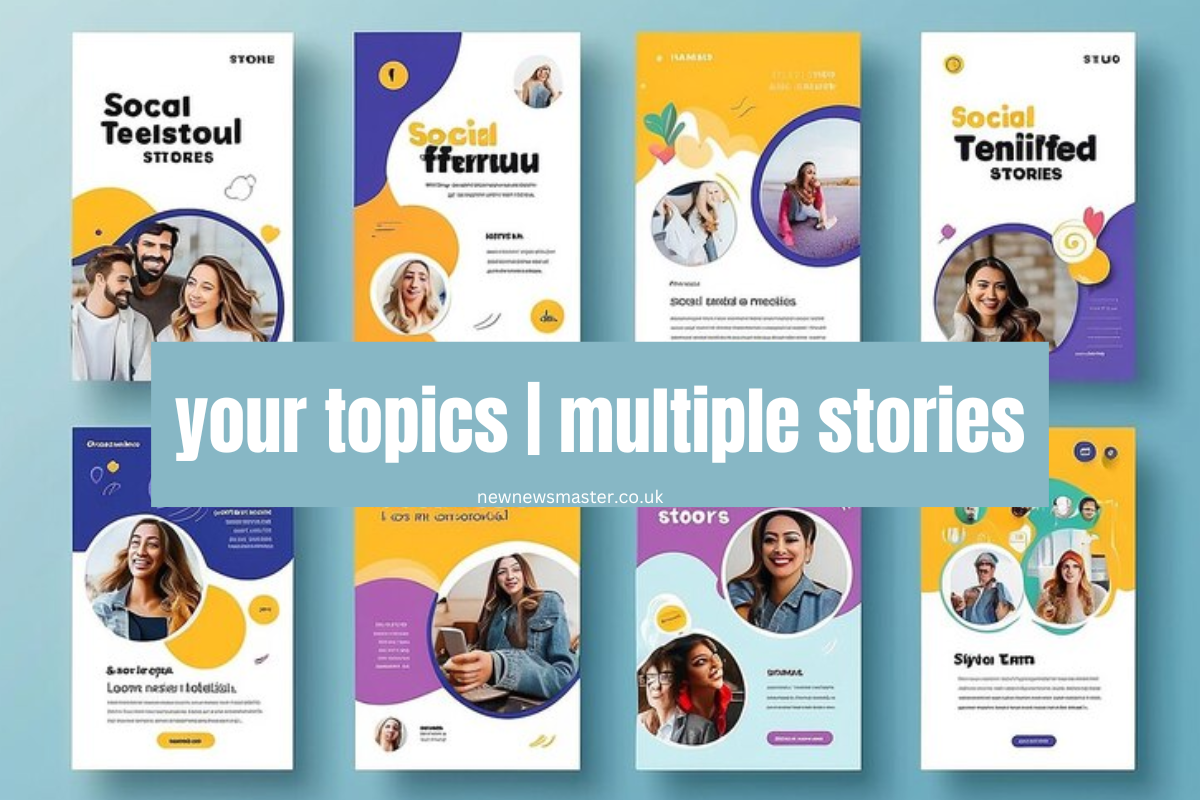Explore how “Your Topics | Multiple Stories” enriches your learning by examining different narratives, broadening your perspectives, and fostering deeper engagement with any subject.
Table of Contents
ToggleIntroduction
In today’s world, information flows rapidly from all corners of the globe. Whether you are tackling scientific phenomena, historical events, or personal development strategies, the key to truly mastering your topics lies in embracing multiple stories. Rather than settling for one-dimensional understandings, approaching a subject from various angles can transform your knowledge into something more expansive, interconnected, and deeply insightful. This exploration into “Your Topics | Multiple Stories” reveals how different narratives, perspectives, and approaches provide a richer, more nuanced view, allowing for both personal and intellectual growth.
The Role of Multiple Perspectives in Deepening Knowledge
To understand the true depth of a subject, it is essential to explore it from different viewpoints. When we limit ourselves to a single narrative, we miss out on the complexity that exists within any given topic. By introducing multiple stories, we begin to see the subject not only as a collection of facts but also as a series of interconnected ideas, experiences, and interpretations that together contribute to a fuller understanding. Multiple perspectives challenge our assumptions, broaden our thinking, and ultimately help us develop a more sophisticated comprehension of the world around us.
In historical study, for example, looking at the same event from various cultural, political, or personal perspectives can reveal hidden layers of meaning. Instead of merely recounting the facts, a multifaceted narrative allows us to delve into the underlying motivations, consequences, and interpretations that shape how history is understood. For instance, the history of a revolution can vary dramatically depending on whether one views it through the eyes of the oppressors, the oppressed, or neutral observers.
How Diverse Narratives Foster Critical Thinking
One of the greatest benefits of examining your topics through multiple stories is the development of critical thinking skills. Each narrative brings with it a set of assumptions, biases, and frameworks that influence how information is presented and understood. By engaging with diverse narratives, you are forced to evaluate the evidence critically, compare different viewpoints, and challenge your own perspectives.
For example, in the realm of science, a breakthrough discovery may be presented differently by different researchers based on their backgrounds, methodologies, and goals. Some scientists might emphasize the immediate applications, while others focus on the long-term implications. By considering all of these narratives, you can evaluate the discovery in a more comprehensive way, understanding not only what was discovered but also how and why the discovery matters in different contexts.

The Impact of Personal Narratives in Learning and Growth
Equally important are personal narratives, which offer profound insights into human experience. Stories from individuals about their struggles, triumphs, and unique life journeys often provide relatable touchstones for those exploring similar topics. Personal stories bridge the gap between theory and real-world experience, allowing us to connect emotionally to the subject matter.
Whether it’s an athlete discussing their mental preparation for a championship or an entrepreneur sharing the story of their startup journey, personal narratives humanize complex ideas. They serve as examples of how theory translates into action, providing context for understanding difficult concepts. By engaging with personal stories, learners gain not only factual knowledge but also the emotional and psychological aspects that make those facts come alive.
Integrating Multiple Stories for a Comprehensive Understanding
When delving into any topic, it is essential to integrate multiple stories rather than merely collecting them. A haphazard approach, where you simply read or hear various stories without reflecting on how they interconnect, can lead to fragmented knowledge. Instead, it is important to see these narratives as pieces of a larger puzzle, each contributing a vital element to the bigger picture.
For instance, when studying climate change, reading about its scientific basis, its economic consequences, and its cultural implications from different geographical perspectives creates a more holistic understanding of the topic.
How Multiple Stories Challenge Preconceived Notions
Our preconceived notions are often shaped by the stories we hear, see, or read most frequently. These narratives influence how we understand ourselves, our societies, and our world. However, relying on a single story or perspective can reinforce existing biases, creating an incomplete or even misleading understanding of a topic. By embracing multiple stories, we actively challenge these preconceived notions, encouraging a more open-minded, adaptable, and critical approach to learning.
Consider how the portrayal of mental health in media can shape public perception. Yet, when we listen to multiple stories—whether from mental health professionals, patients, or cultural critics—we gain a more nuanced understanding of the complexities surrounding mental health issues. These diverse stories challenge stereotypes, broaden empathy, and inspire more effective solutions for addressing mental health in society.

The Influence of Cultural Narratives on Your Topics
Cultural narratives are a powerful force in shaping our understanding of the world. These stories, passed down through generations, carry the values, beliefs, and experiences of entire societies. Whether in literature, folklore, or modern media, cultural narratives influence how we view ourselves and others, as well as how we interpret global events.
When exploring topics such as globalization, identity, or even technology, it is essential to consider how cultural narratives shape these concepts. A person’s understanding of what constitutes success, happiness, or innovation will differ based on their cultural background. Thus, by exploring a variety of cultural stories, we can broaden our comprehension of global issues and develop a more inclusive worldview.
The Benefits of Multiple Stories in Personal Development
Personal development is another area where the integration of multiple stories plays a crucial role. There is no one-size-fits-all approach to growth and self-improvement. What works for one person may not work for another, and what inspires one individual may leave another indifferent. By listening to a diverse array of personal development stories, individuals can gain insights into the strategies, philosophies, and practices that resonate most with them.
Some people may find motivation in the success stories of well-known figures, while others may draw inspiration from more relatable or local narratives. empowering them to take action and continue growing.
Embracing Technology and Multiple Stories in Education
Technology plays a pivotal role in how we access and engage with multiple stories. The internet, social media, and digital platforms offer unparalleled access to diverse voices, experiences, and expertise. Educational tools and platforms that incorporate multimedia storytelling—such as documentaries, podcasts, and interactive websites—allow learners to engage with content in dynamic, multifaceted ways.
Through the use of digital resources, learners can immerse themselves in multiple stories, all while interacting with them in a way that feels immediate and personal. This access to a wide array of voices enables learners to deepen their understanding of any topic, gaining a richer, more contextualized perspective. By using technology to access diverse stories, education becomes not only more accessible but also more engaging and impactful.
The Psychological Impact of Multiple Stories
The psychological impact of multiple stories is profound. When we hear different viewpoints or see a problem from various angles, our brains begin to process information more critically, considering multiple outcomes and perspectives. This mental exercise strengthens cognitive flexibility and promotes better decision-making skills.
Moreover, the emotional connection to stories can inspire action. When we encounter a story that resonates deeply with us, it has the power to motivate change, whether in personal habits, societal engagement, or professional development. By embracing multiple stories, we allow ourselves to be inspired in unexpected ways, sparking creativity, innovation, and empathy in our daily lives.

Engaging with Different Stories for a More Inclusive Worldview
One of the most important reasons to embrace multiple stories is that it promotes inclusivity. By intentionally seeking out diverse narratives, we broaden our understanding of the human experience and develop greater empathy for others. This is especially important in an increasingly interconnected world, where cultural, racial, and socioeconomic divides often lead to misunderstandings and conflict.
When we listen to stories from people who have lived experiences different from our own, we gain new perspectives on issues such as race, gender, and inequality. These stories challenge our biases and encourage us to rethink our assumptions about the world. In turn, this leads to more compassionate, inclusive, and informed communities.
Stories as Catalysts for Change
Finally, stories are not just passive vessels of information—they can serve as catalysts for change. The stories of individuals who fought for civil rights, gender equality, or environmental sustainability have inspired countless others to take action and make a difference.
By exploring these stories, we not only gain insight into the struggles of the past but also understand how we can contribute to positive change in the present. Whether through activism, education, or personal choices, the stories we engage with shape the future of society.
Conclusion
Embracing multiple stories is an essential practice for anyone seeking to deepen their knowledge, broaden their perspective, and foster empathy. Whether exploring science, history, personal development, or societal issues, the integration of diverse narratives enhances our understanding, challenges our assumptions, and encourages critical thinking. As we engage with multiple stories, we not only enrich our learning but also contribute to a more inclusive, compassionate world.
By making a conscious effort to explore different perspectives and integrate various narratives into our studies, we ensure that our understanding of the world is as rich and multifaceted as the stories that shape it.
Read also: ветеринарная клиника vetcitypets Ultimate Guide for Pet Care





